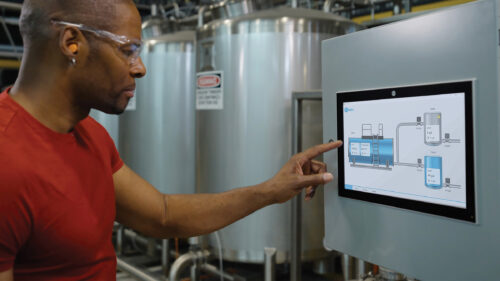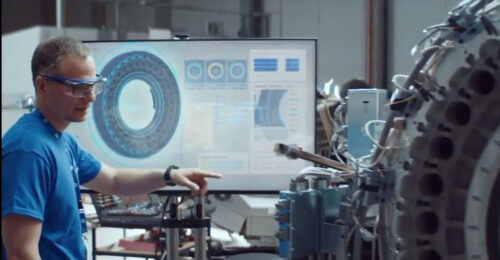Going green: New technology makes ac motors more efficient
In an effort to reduce worldwide industrial energy usage, SEW Eurodrive introduced new motor technology, to help companies' sustainability efforts. See photo. The company is among exhibitors at Pack Expo 2008.
Lyman, SC – Claiming a world first, SEW-Eurodrive introduced new line of ac motors said to feature modular components that can be configured to comply with any nation’s energy efficiency standards. The company plans to replace all other ac motors in its product line with DR-family motors in 2009, which it says will provide engineers with optimum energy-saving solutions for any application. The compact new motors can be integrated into the company’s gearmotors, used as stand-alone motors, or incorporated into decentralized control architectures. SEW Eurodrive is among exhibitors at Pack Expo 2008 .
| SEW-Eurodrive DR-series motor feature more efficient rotor technology |
The company, which has been supplying motors since it was founded in Germany in 1931, says that in 2002 it was the first company in the world to manufacture industrial ac motors using die-cast copper technology. It has since worked to create a new generation of energy-efficient motors using materials like copper to lower electrical resistance and new designs to reduce energy losses in operation. Copper rotor cages, for example, allow a motor’s power rating to increase compared to other materials, while maintaining its efficiency. This enables the same motor size to produce more power.
“As a manufacturer of motors, gear units, and electronic drives,” says Dave Ballard, the company’s director of U.S. engineering and marketing, “we understand the complete drive train and how each element needs to function to achieve maximum energy savings. The new DR motor series reflects our commitment to helping customers achieve the most energy efficient operations no matter what their application conditions or local energy-efficiency requirements.”
The company says DR motors will be available in three versions: a standard model and two high efficiency versions. The standard model is designed for high cycling applications like material handling and packaging, where frequent starts and stops would counteract any energy savings that could be gained from using a premium efficiency motor. One of the energy efficient versions meets NEMA Premium requirements for the U.S. market. The other complies with the efficiency requirements of other countries, including the new
IEC motor standard
expected take effect in Europe in 2011.
The company says the new series also addresses industry requirements for small, compact and decentralized drive solutions for material handling and transportation systems, and that it’s modular approach to product design allows engineers to select exactly the right motor, drive and gear unit combination to maximize energy savings in every application.
In another engineering innovation, engineers integrated an encoder into the fan rather than at the end of the motor to help achieve a compact footprint. This built-in encoder is said to be fully integrated into the motor, reducing cost and complexity of encoder engineering, and making it easy to retrofit.
Many tasks require only simple positioning and velocity detection. Since high-resolution encoders installed on the non-drive-shaft end are often too complex for this task, the company developed several fully integrated and affordable encoders with a resolution between one and 24 pulses per revolution. For high-resolution applications, standard-mounted encoders have been equipped with a new, simpler connection. Input shaft assembly is said to make for easier encoder changes. Several encoder types, including sin/cosine, HTL, TTL, RS-485 and others, are available.
The company says the series also reflects modularity with a new braking system, which for the first time allows three brake sizes to mate with a single motor size. Since many applications don’t require full braking torque, this modular approach provides choices, which can equate to cost and weight reductions.
The new brakes are said to be quieter and, since they are mounted on a friction plate, easily removable for maintenance or resizing without disassembling the motor. Sensors make monitoring for wear or operation simpler.
Also see:
NEMA announces interactive Standards and Products Guide for free download
.
Motor Summit 2008 touts global cooperation on energy efficiency
.
— Edited by C.G. Masi , senior editor
Control Engineering News Desk
Register here and scroll down to select your choice of eNewsletters free.
Do you have experience and expertise with the topics mentioned in this content? You should consider contributing to our CFE Media editorial team and getting the recognition you and your company deserve. Click here to start this process.





